HIP TO
KNIT
18
Contemporary
Projects
for Todays Knitter
Judith L. Swartz

Acknowledgments This book is dedicated in loving memory of my mother, Claire Feit Swartz, and my grandmother, Beatrice Semel Feit, my first knitting teachers.  Special thanks go out to many people who helped make this book possible. To Marilyn Murphy, my good friend and editorthis project has been a great collaboration, just like old times at the Weaving Workshop in Chicago. And to Jean Lampe for your meticulous technical editing. My gratitude goes out to both of you for all your patience, understanding, and support as I knitted through lifes challenges. Thanks to Betsy Armstrong, Linda Ligon, Linda Stark, and the entire support staff of Interweave Press who worked so professionally to make the vision of this book a reality. Thanks to Amy Detjen and Lynn Gates for your swift and careful knitting. Thanks to Don Greenwood for the back cover photo.
Special thanks go out to many people who helped make this book possible. To Marilyn Murphy, my good friend and editorthis project has been a great collaboration, just like old times at the Weaving Workshop in Chicago. And to Jean Lampe for your meticulous technical editing. My gratitude goes out to both of you for all your patience, understanding, and support as I knitted through lifes challenges. Thanks to Betsy Armstrong, Linda Ligon, Linda Stark, and the entire support staff of Interweave Press who worked so professionally to make the vision of this book a reality. Thanks to Amy Detjen and Lynn Gates for your swift and careful knitting. Thanks to Don Greenwood for the back cover photo.  I would like to acknowledge all the yarn companies who so graciously provided yarns used in this book. It is always a pleasure to work with quality materials.
I would like to acknowledge all the yarn companies who so graciously provided yarns used in this book. It is always a pleasure to work with quality materials.  Many personal thanks are necessary. First, to my husband, Joel Marcus, for his unfailing love and support and for allowing me the time and space needed to complete this project. To my father, Alex Swartz, and to my late mother, Claire Swartz, for their support, encouragement, and delight in my success. Thanks to my nonknitting sister, Susan Fish, who always appreciates a handknitted giftmaybe this book will finally inspire her to pick up the needles. A special thanks goes out to all the wonderful friends who participated in our Friday Knit Nights in Chicago. We shared a lot of good food, wine, and knitting. May this book inspire new knitters to find the pleasure in knitting and the joy in sharing it that we have found.
Many personal thanks are necessary. First, to my husband, Joel Marcus, for his unfailing love and support and for allowing me the time and space needed to complete this project. To my father, Alex Swartz, and to my late mother, Claire Swartz, for their support, encouragement, and delight in my success. Thanks to my nonknitting sister, Susan Fish, who always appreciates a handknitted giftmaybe this book will finally inspire her to pick up the needles. A special thanks goes out to all the wonderful friends who participated in our Friday Knit Nights in Chicago. We shared a lot of good food, wine, and knitting. May this book inspire new knitters to find the pleasure in knitting and the joy in sharing it that we have found.

Table of Contents
Techniques and Tips
I was lucky enough to learn to knit from my mother and grandmother. I remember the excitement of finally being old enough at age eight to be taught the skill that, for as long as I could remember, I had watched with fascination. I still incorporate some of my mothers and grandmothers idiosyncracies into the way I knitmy method of purling and the way I wind a little ball of extra cast-on yarn. I even have some of their knitting accessories that have now reached vintage status. I love the romantic idea of a craft passed down through the generations much like an oralor perhaps tactilehistory. Whenever Im knitting, my mother and grandmother are with me.  A wonderful phenomenon has been taking place of late. A whole new generation of young adults is falling in love with knitting. Changes in time and philosophy may have diminished the role of family in knitting. Now, in many cases, instead of a vertical passage of knowledge from generation to generation, knowledge is passing laterally within one generation as friend teaches friend. People are finding both a sense of personal satisfaction and community in knitting as avid groups form for the express purpose of being together to knit. It is a time like no other; where it is hip to knit.
A wonderful phenomenon has been taking place of late. A whole new generation of young adults is falling in love with knitting. Changes in time and philosophy may have diminished the role of family in knitting. Now, in many cases, instead of a vertical passage of knowledge from generation to generation, knowledge is passing laterally within one generation as friend teaches friend. People are finding both a sense of personal satisfaction and community in knitting as avid groups form for the express purpose of being together to knit. It is a time like no other; where it is hip to knit.  In writing this book, I have chosen patterns, styles, yarns, and techniques for todays knitter. My many years of teaching knitting classes and selling yarn have helped me design patterns for the projects that both customers and students want to knit. The projects are presented in a straightforward format, they address frequently asked questions, and they include extra explanations where knitters most often get confused. The projects start with the very simplest and become more sophisticated as you acquire knowledge and skill. The chapter on basics explains everything you need to get started, and it shows the techniques you need to do each of the projects. Its my desire that the experience for all new knitters be positive so that they will find the same pleasure and satisfaction in knitting that I do.
In writing this book, I have chosen patterns, styles, yarns, and techniques for todays knitter. My many years of teaching knitting classes and selling yarn have helped me design patterns for the projects that both customers and students want to knit. The projects are presented in a straightforward format, they address frequently asked questions, and they include extra explanations where knitters most often get confused. The projects start with the very simplest and become more sophisticated as you acquire knowledge and skill. The chapter on basics explains everything you need to get started, and it shows the techniques you need to do each of the projects. Its my desire that the experience for all new knitters be positive so that they will find the same pleasure and satisfaction in knitting that I do.
One advantage of knitting your own sweater is your ability to make it exactly the size and fit that you want. With some careful measuring and simple math, alterations to a pattern can be knitted as you go along or, better yet, planned for before you even start. Still, many new knitters are put off by taking measurements and choosing sizes, and they find it a daunting and mystifying task instead of an empowering opportunity.
The first step is to determine which size of pattern instructions to follow. Simply measure an existing garment that fits the way you want your sweater to fit. Lay the garment out on a flat surface and measure the key pointswidth, length, and sleeve length. Patterns generally include schematic drawings with all key measurements spelled out. Compare these measurements to your garment and choose a corresponding size. Keep in mind, however, that differences in yarn weight and gauge can affect fit. For instance, a sweater knitted with lightweight yarn usually has more ability to drape than a bulky one where extra fabric bunches up.
Next, take into consideration how the garment is to be worn. Do you want it to fit next to your body or over layers of clothes? Is it an outdoor garment for winter or a summer top? A sweater coat, even if it is slim-fitting, requires more ease than a tank top. Note down any changes you make to a pattern, such as make sleeves two inches shorter. Generally speaking, length measurement changes are easier to adjust than width changes. Therefore, choose the pattern size option closest to the desired width and work from there to personalize the fit.
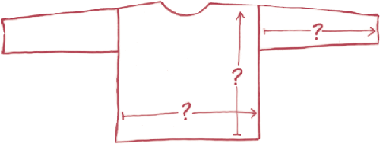
Garments are often described as close-fitting, standard-fitting, loose-fitting or oversized. These terms refer to the size of the garment in comparison to body measurements, particularly bust/chest circumference. For this reason, you need to measure the bust or chest at the fullest part. A close-fitting garment is the same measurement, or sometimes an inch or two smaller (knits stretch to fit the form.) A standard-fitting garment is about two or three inches larger than the body measurement, or it contains two to three inches of ease. A loose-fitting garment contains about five inches of ease, and an oversized garment is at least six inches larger than the body. Remember that choosing a size by following these guidelines produces a garment sized as the pattern designer intended. However, there is no law that says a knitter must follow these guidelines, and this is where you have the opportunity to individualize the look and fit of a pattern. Just make sure that the lines of the garment lend themselves to your alternative interpretation. For instance: Dropped shoulders generally look better in a garment that is at least somewhat oversized, while set-in and raglan sleeves are pretty versatile and can withstand dramatic changes in fit interpretation. Very full sleeves need to be tapered to keep proportion with a fitted body. If you feel that everything needs changing, you should choose a different pattern.
Fashions change often, but a good sweater design can be timeless. A dated photograph does not necessarily mean a dated design. Too often people cannot see beyond an existing presentation, even as far as changing the color! Sometimes a classic pattern just needs a change in fit to renew it. Would that cardigan be perfect if it were several inches shorter? What if it was body-skimming instead of standard-fitting?


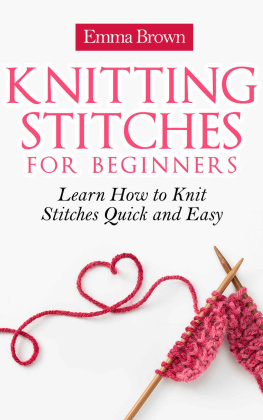
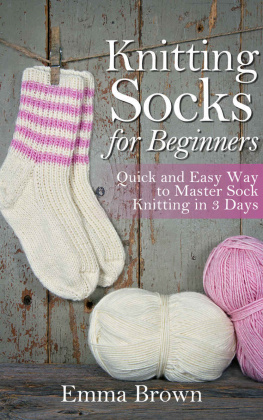
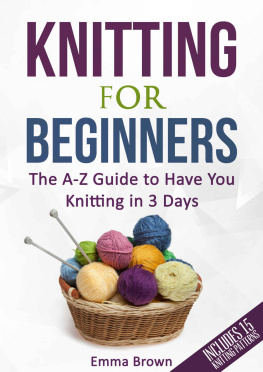
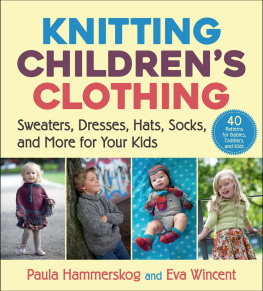
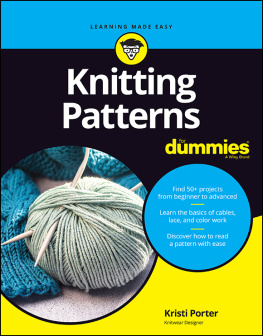
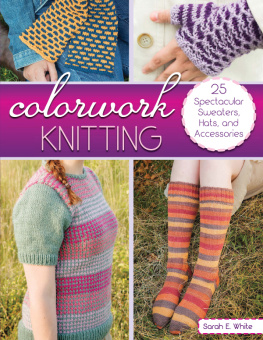
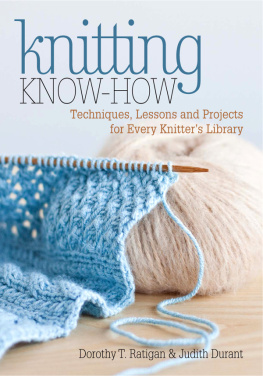

 Special thanks go out to many people who helped make this book possible. To Marilyn Murphy, my good friend and editorthis project has been a great collaboration, just like old times at the Weaving Workshop in Chicago. And to Jean Lampe for your meticulous technical editing. My gratitude goes out to both of you for all your patience, understanding, and support as I knitted through lifes challenges. Thanks to Betsy Armstrong, Linda Ligon, Linda Stark, and the entire support staff of Interweave Press who worked so professionally to make the vision of this book a reality. Thanks to Amy Detjen and Lynn Gates for your swift and careful knitting. Thanks to Don Greenwood for the back cover photo.
Special thanks go out to many people who helped make this book possible. To Marilyn Murphy, my good friend and editorthis project has been a great collaboration, just like old times at the Weaving Workshop in Chicago. And to Jean Lampe for your meticulous technical editing. My gratitude goes out to both of you for all your patience, understanding, and support as I knitted through lifes challenges. Thanks to Betsy Armstrong, Linda Ligon, Linda Stark, and the entire support staff of Interweave Press who worked so professionally to make the vision of this book a reality. Thanks to Amy Detjen and Lynn Gates for your swift and careful knitting. Thanks to Don Greenwood for the back cover photo.  A wonderful phenomenon has been taking place of late. A whole new generation of young adults is falling in love with knitting. Changes in time and philosophy may have diminished the role of family in knitting. Now, in many cases, instead of a vertical passage of knowledge from generation to generation, knowledge is passing laterally within one generation as friend teaches friend. People are finding both a sense of personal satisfaction and community in knitting as avid groups form for the express purpose of being together to knit. It is a time like no other; where it is hip to knit.
A wonderful phenomenon has been taking place of late. A whole new generation of young adults is falling in love with knitting. Changes in time and philosophy may have diminished the role of family in knitting. Now, in many cases, instead of a vertical passage of knowledge from generation to generation, knowledge is passing laterally within one generation as friend teaches friend. People are finding both a sense of personal satisfaction and community in knitting as avid groups form for the express purpose of being together to knit. It is a time like no other; where it is hip to knit. 